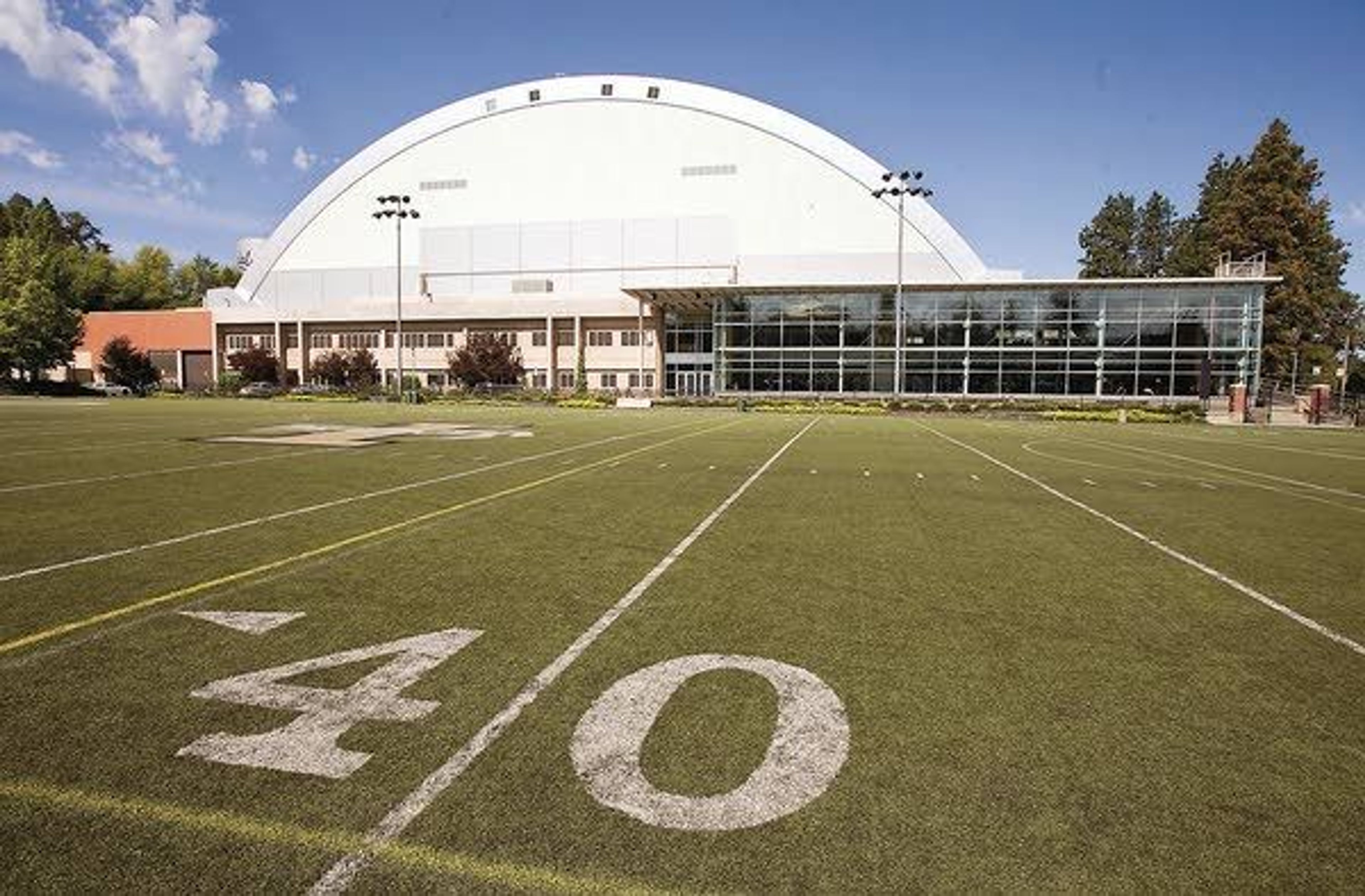University of Idaho icon: 40 years of the Kibbie Dome
Despite upgrades, attendance continues to lag
At the time of the ASUI Kibbie Activity Center's construction, many engineers questioned if the project was even possible.
Forty years after the dome's completion in 1975, at a cost of $7.8 million, the structure today remains an icon at the University of Idaho campus.
From afar, the dome - which was constructed to replace the UI's old wooden Neale Stadium after it burned in the late 1960s - appears somewhat like a large sealed tin can, half buried in the ground.
UI Athletic Director Rob Spear said there are just a handful of college football domes in the country, including the Syracuse Carrier Dome, the North Dakota State Fargodome and Idaho State's Holt Arena.
The Kibbie Dome, though, isn't like any other.
In 1976 the Kibbie Dome won the Structural Engineering Achievement Award from the American Society of Civil Engineers based on the design of its roof, and in 1998 the dome's construction was the topic of the book "Raising the Roof."
According to the book, the dome's roof is made from a series of 80-foot-long and about 12-and-a-half-foot-wide arches. Each weighs about 45,000 pounds and is made from slabs of laminated veneer lumber that are 2-feet wide by 2-inches thick and sit on the top and bottom of numerous 7-and-a-half foot metal jigs to offer the arch shape and support.
To position the arches, a mobile 125-ton crane was used to move the sections of roof.
Once placed, the large wooden arches were coated with an aluminum sealant to protect the wood from being damaged, but Spear said a scan of the roof in 1981 showed it was moist and subject to wood rot and a composite roof was constructed over the initial covering.
The roof stands 150-feet high at its peak and covers 202,000-square feet, more than four-and-a-half acres.
Spear said the dome serves as one of the last multipurpose athletic centers in the country, housing almost all of the university's athletic-related business and offering student athletes the resources for physical exercise and academics all in one place.
The dome's manager, Rob Anderson, said the dome is like "a Swiss army knife of a facility."
While the Vandal football team has enjoyed little success - and even smaller crowds - in recent years, it wasn't always so.
Marcis Fennell, who played a number of positions on Idaho's offensive line from 2004 to 2007, said he remembers the dome being packed when teams like Boise State came to town.
"It was shaking a little - it was crazy," he said. "It truly put the pride of being a Vandal in your heart."
When the dome was filled, he said, other teams viewed the it "like a cage."
"Guys hated playing here - the fans are so close," Fennell said.
Fennell, however, described most games in the dome as "dormant."
Fennell said he's heard stories about the Vandals in the 1980s, when soon-to-be NFL players Mark Schlereth, who played on the offensive line, and John Friesz, who played quarterback, were winning Big Sky championships and fans were packing the Kibbie Dome.
He said he thinks a community following could change the nature of the dome and the culture of Vandal football, along with the other sports programs that compete there.
"The dome is something special and intimate," Fennell said. "People don't know what they gave us, but I've seen the magic it presents."
According to the 2014 NCAA Division I FBS team-by-team home attendance records, the UI's football program ranked 120 out of 125 total teams in average home attendance last season. The Kibbie Dome averaged just 12,886 filled seats last year and pulled about 64,500 people in attendance all season - about two-thirds of what the college football juggernaut Alabama averages in just a single home game.
Although it is a massive structure, ESPN claims the dome is the smallest stadium in the FBS, with a capacity of about 16,500.
Spear said the university has managed to upgrade some aspect of the dome every year since he was hired 11 years ago.
Since 2004, he said, the UI has worked to improve the facility and its football program, constructing new translucent vertical walls on each of the dome's ends that allow 16 percent of natural light to shine through, a weight room, locker rooms and a practice field and track outside the dome. A 30-by-50-foot scoreboard and premium seating spaces have also been added in recent years.
In his office, Spear has renderings of how the dome's field could be lowered to make room for an additional 9,000 seats to push the stadium's capacity to about 25,000. However, Spear said expansion is unlikely to happen any time soon considering the current difficulty of filling seats.
He said the university's first priority is to construct about a $25 million to $30 million basketball facility on the lawn that rests on the north side of the stadium. Spear said it would be a way to separate the two programs and generate more revenue because the dome would be able to offer more events in a given year with basketball having its own facility.
Josh Babcock can be reached at (208) 883-4630, or by email to jbabcock@dnews.com.













